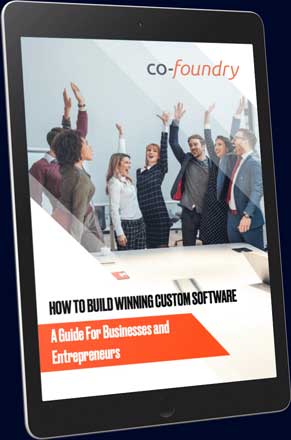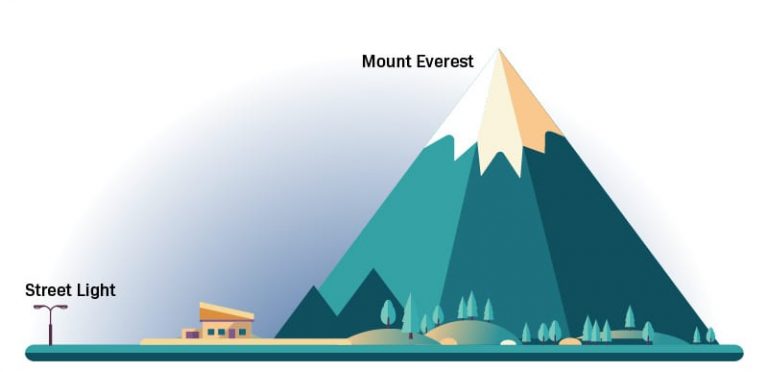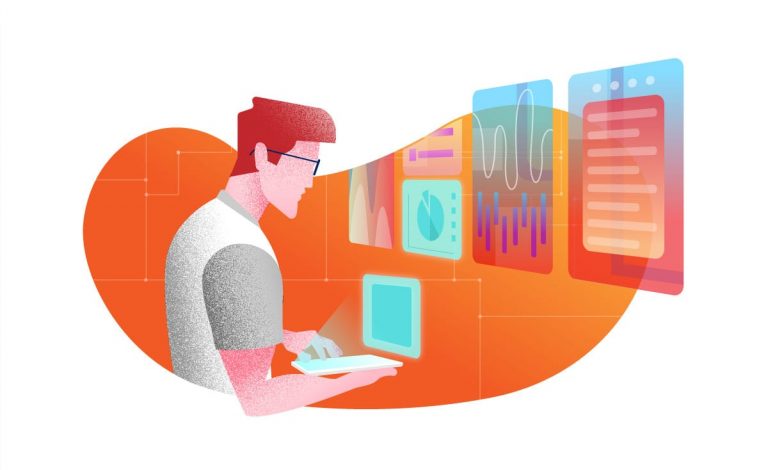User Experience (The Key To Successful Custom Software)

If your software is easy to use and users feel good using it, then you’ve probably got a successful product on your hands!
User experience has become an increasingly important term in software development and for good reason. It puts the users’ experience of software at the forefront from the moment a project starts and continues to do so even once the software has been launched.
Having good user experience helps to gain and retain users, which, of course, is great for business!
Defining User Experience

So what exactly is user experience?
Abbreviated to UX, user experience is the way that a person feels when they’re interacting with a system, product or service, and how easy it is to use that system.
UX pioneer Peter Morville uses the following words to describe UX: Useful, usable, desirable, valuable, findable, accessible, and credible. Requirements of good UX include that it addresses a need that the user has. The user should be able to easily navigate the system to achieve their goal. And they shouldn’t have to think too hard while doing so. Users of software with good UX will trust it and want to continue using it. It will provide value to their lives in some way. All these elements work together to create a wonderful experience. If any of them are missing or not functioning well, the whole experience will be affected. Here’s an example. Perhaps you’re about to buy that expensive pair of sneakers you’ve been eying. The website is beautifully designed, and all the necessary information like prices are clearly displayed. It’s easy to find the shoe you want and to choose the right size. But once you reach the checkout page, the process is confusing and the site becomes glitchy. You feel uncomfortable and are worried about entering your credit card details. You decide to look for the shoe on a different site instead. Another aspect of UX that is often talked about is user interface, or UI. An interface is the point where two systems or subjects meet and interact. So the user interface is the point at which the user interacts with the software. Contrary to some beliefs, UX and UI are not interchangeable terms. Rather, UI is an aspect of UX. Let’s use a coffee machine to demonstrate the difference between the two terms. The parts of the machine that you touch or interact with like its screen or any buttons is its UI. The user experience, or UX, refers to the UI plus everything else about the coffee machine that creates a certain experience for you. If the mechanical parts inside the appliance don’t work properly then you’re unlikely to have a good user experience.
The Role User Experience Plays in Shaping Custom Software Development

UX is an essential part of custom software development. The goal of custom software is to enable its users to do a particular repeatable task quickly, easily, effortlessly and accurately. These goals are intrinsic to great UX too. Because UX is so focused on the user’s journey and perceptions, the process of developing software has become as important as the software itself. A lot of emphasis is placed on testing, market research, and doing user interviews during and even before the system, product or service is designed or developed. As a result, a product aimed at customers, that has good UX, has an advantage over its competitors. This is because the customers’ needs and journey were taken into account during each step in the development process. They will regard this product as credible and view it as catering to their needs, which in turn will drive sales. In today’s world where customers are spoilt for choice, poor UX can be detrimental to business. Customers can stop using your product and move to another just as quickly as they started using it. In the case of software used internally by companies, the better the UX, the more likely users will adopt it. A software system which was designed with employees in mind will feel more intuitive to them when they use it. This will enhance their acceptance of the system and their confidence in using it. This is important if the company is to maintain smooth operations and high levels of productivity. A software system which has a less than enthusiastic uptake or many glitches, will cost the company time and money as it works around these problems, and further investment in campaigns to get its employees on board.
Why Is UX So Important In Software Anyway?

UX is everything when it comes to custom software. Software is about how easy and intuitive it is to use and how good it feels to use. Good UX means that the customer will feel satisfied when using the software. Ideally, they won’t struggle with it or need training to use it. Let’s say a developer builds an app. The technical aspects of the app are outstanding. The latest, top-end technology has been used and the developer really technically outdid themself. Once that was done, a designer created a great-looking user interface for the app. When users first download the app they are blown away by how wonderful it looks. But, when they start using the app they become frustrated because it’s difficult to find what they’re looking for. They keep running into dead ends and aren’t able to complete the task they set out to do. Eventually, they give up, annoyed and disappointed. This again is a demonstration of how vitally important every single aspect of UX is when it comes to developing custom software. In this example it didn’t matter how good the app looked or how technically superior it was, because the user wasn’t able to achieve what they had set out to achieve. Had the developers of the app in the above example taken time to do market research and interview potential users, they would probably have been able to create a smoother, more valuable and more enjoyable experience on the app. Now, not only have they lost users, they will also have wasted a lot of time, money and other resources on an app which no one needs or even wants to use. This type of mistake could sink a small business.
A Great UX Benefits New User Onboarding

Getting people to use your product and continue using it is largely a psychological process. You only have a few minutes to hook them. Want proof? A Localytics study found that 21% of users will never use an app beyond the first use. You only have one chance to prove to users why they should stay with your software. To do this, your product should make users feel like it is meeting a need that they didn’t even know they had. To achieve this, you have to understand what drives them. What are their goals and motivations? And what are their dislikes? This is an essential part of UX onboarding. The first impression that a user gets of your product should not only impress them but entice them to see what else the product has to offer. They took the time to download your app or product and you need to reward them for that within their first few moments of using it. A product that is easy to use, with little to no learning curve, will make a user feel confident about their abilities as well as regard the product as credible. You’re more likely to retain a user that feels this way about your product. This user may also recommend the product to other people, creating organic marketing, and attracting more adopters. If your product is by nature more complicated, make sure that there aren’t any unnecessary features which make it feel overwhelming to the user. Consider including a short how-to video or tutorial. Your user will feel like you’ve seen them. You’ve understood them and respected them enough to show them how the product works. Another common user onboarding technique is to build an introductory tour into the first use experience. The user can be led around the interface and shown how to achieve the purposes of the app and get the results they want from it. Still a further method that is proven to help motivate users to move further into fully adopting the software is what is known as gamification. This is where users are given small goals or series of goals and achieve badges, progress bars and mini awards for achieving them. This gives them a sense of challenge and fun and motivates them to explore the different aspects of what’s on offer in your platform. Successful onboarding is vital to growing your user base, and as a result, your sales. The better their experience and journey on the product, the more likely you are to make sales.
Different Types of User Journeys Each Require User Experience Design
Throughout this article we’ve emphasised how important the users’ experience of a software product is. But how do you know what the user will experience? And how will you make sure it’s a good experience? This is where user journey mapping comes in. Essentially it forces developers to interact with the software in the same way that a user would. To make sure that your software has good UX, this should be done before the product is even built. It can even be done on paper. User journey mapping maps out each step that a user will take on their way to achieving what it is they are using the product for. Depending on what your product, service or system is, you may have different personas each hoping to achieve something different when using the software. For example, a software admin would have a different user journey to a software employee. And they in turn would have a different journey to end users. In this case, it is vital to map out the journey for each of these personas so that you understand each individual journey and can optimise the user experience for each of them. You’ll need to understand each ‘persona’ well in order to do this. Research and interview target users to determine what their needs are, what motivates them, and what their pain points are. Figure out what their expectations of the software are. Armed with this information you can map out user journeys using facts instead of relying on assumptions which are potentially false. It’s important to be honest during the mapping process. It won’t help much if the user journey isn’t based on real user experience. If you realise that a step in the process doesn’t work for some reason, this is the time to fix it rather than have to modify the finished product.
How Building An MVP and Using An Agile Development Approach Helps Shape Successful UX
Part of ensuring great UX is by validating early ideas and getting user feedback. This is known as agile development. It’s an iterative approach that tests and validates assumptions and software during each stage of development from the moment the project starts. Based on the feedback received during every stage, the product is tweaked and changed, before starting on the following stage. This means that the product is being perfected throughout its development. By the time it’s released to users you’ll be reasonably confident that you’re selling them a product that they need and are going to enjoy using, minimising your chance of releasing a failed product. The first iteration of a product that you launch to early adopters will be your minimum viable product (MVP). The MVP will contain minimal features and the most basic and crucial functionality. Do this to drive user engagement, but also to collect feedback from early users. Use the feedback to continuously improve the product. Apple provides a good example of how products are improved even after they’ve been released. They regularly release software updates with new features or fixes for problems in previous iterations. This way their business benefits from having a product that’s already on the market. Meanwhile, the users benefit from having a product which is constantly improved based on their very real experiences, needs, and feedback.
Conclusion

UX is the cornerstone of custom software development. The way a user feels when they’re using the product and its usability are based on how good the UX is. Mapping user journeys; testing, validating and making improvements with each iteration of the project; and releasing an MVP to early adopters are all ways in which custom software developers can ensure successful UX. In the end, great UX is good for the user, but it’s also great for your business! That’s why you’ll want to choose a developer who focuses on UX. At Co-Foundry, we create custom software that provides a seamless, intuitive and enjoyable experience for users. Reach out to us if you need any help with your software development needs.

Want Help With Your Software Project?
Get Our Free Ebook: How to Build Winning Custom Software – A Guide For Businesses and Entrepreneurs
By subscribing, you agree to get emails from Co-Foundry. We’ll respect your privacy and you can unsubscribe at any time.






